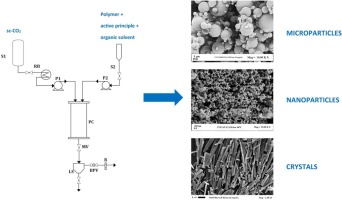- Home
- Blog
- News
- Basics
- Sources
- Agencies, Regulatory & Organisations
- CERSI Excipients Browser
- Excipient Report
- Excipient DMF List
- EXCiPACT Certified Companies
- Excipient Documentation
- Excipient EINECS Numbers
- Excipient E-Numbers
- FDA Inactive Ingredient List
- FDA GRAS Substances (SCOGS) Database
- IPEC Americas
- USP - U.S. Pharmacopeia
- Definitions
- Whitepapers / Publications
- Supplier
- Services
- Media
- Events
- 1st pharmaexcipients Poster Award
- Event Calendar
- Events featured by pharma-excipients
- 4th Annual Formulation & Drug Delivery Congress
- DDF Summit
- ExcipientFest Americas
- ExcipientFest Asia
- Global CompliancePanel
- International Conference and Exhibition on Pharmaceutics & Novel Drug Delivery Systems
- Formulation & Drug Delivery USA Congress
- Laboratory Medicine 2018
- Making Pharmaceuticals Europe
- Making Pharmaceuticals Exhibition
- Pharma Integrates
- PharmaExcipients China @CPhI China
- TTC Technology Training Center
- Jobs
- Online Sourcing
- Contact
30. August 2018
Antisolvent precipitation of poorly water-soluble drugs is a promising formulation technique to synthesize amorphous nanoparticles. The dissolution behavior of these nanoparticles is improved because of the high specific surface area and the amorphous state, leading to an enhanced bioavailability of the drug molecules. Nevertheless, stabilization of precipitated drug nanoparticles against agglomeration and recrystallization, which constitutes a key issue for further processing steps, has turned...
07. May 2018
Supercritical antisolvent precipitation (SAS) has been successfully used to produce microparticles and nanoparticles of controlled size and distribution either as a single precipitates or by coprecipitation of two or more compounds. SAS coprecipitation process has produced different particles morphologies and, differently from the single compound SAS precipitation, process mechanisms involved have never been elucidated and the effectiveness of the technique has been verified only in some cases....
20. April 2017
Abstract Objective: The aim of this work was to investigate the potential of controlled precipitation of flurbiprofen on solid surface, in presence or absence of hydrophilic polymers, as a tool for enhnaced dissolution rate of the drug. The work was extended to develop rapidly disintegrated tablets. Significance: This strategy provide simple technique for dissolution enhancement of slowly dissolving drugs with high scaling up potential. Method: Aerosil was dispersed in ethanolic solution of...
03. April 2017
Abstract: A novel supersaturable self-emulsifying drug delivery system (S-SEDDS) of cyclosporine A (CyA)—a poorly water-soluble immunosuppressant—was constructed in order to attain an apparent concentration–time profile comparable to that of conventional SEDDS with reduced use of oil, surfactant, and cosolvent. Several hydrophilic polymers, including polyvinylpyrrolidone (PVP), were employed as precipitation inhibitors in the conventional SEDDS, which consists of corn...
20. August 2016
Abstract Active pharmaceutical ingredients (APIs) with strongly pH-dependent aqueous solubility can face the problem of precipitating from solution when the pH changes from acidic in the stomach to neutral in the intestine. The present work investigates the effect of two polymeric excipients – polyvinylpyrrolidone (PVP) and Soluplus – on the ability to either prevent precipitation, or to control the size distribution of precipitated particles when precipitation cannot be prevented. Two...
08. August 2016
Abstract Supersaturating drug delivery systems can enhance the oral bioavailability of poorly soluble drug compounds. Supersaturation of such compounds has been studied in many different ways; however, a more standardized method is required. The rationale of choosing suitable concentrations of supersaturation to study has previously been very inconsistent. This makes comparisons between studies and compounds difficult, as the propensity of compounds to supersaturate varies greatly. This study...
07. July 2016
Abstract An in vitro biorelevant gastrointestinal transfer (BioGIT) system was assessed for its ability to mimic recently reported albendazole concentrations in human upper small intestine after administration of free base suspensions to fasted adults in absence and in presence of supersaturation promoting excipients (hydroxypropylmethylcellulose and lipid self-emulsifying vehicles). The in vitro method was also used to evaluate the likely impact of using the sulfate salt on albendazole...
26. March 2016
For many water insoluble acidic or alkaline drugs, amorphization and nanonization represent an effective bioavailability enhancement strategy. Cefixime (CFX) was chosen as a model drug, and amorphous nanoparticles were prepared via a typical process intensification technology: high-gravity reactive precipitation (HGRP). The effects of temperature, rotating speed, overall flow rate, and drug concentration on the particle size and size distribution were investigated. Under the optimum conditions,...
24. February 2016
Coprecipitation of poorly water soluble drugs with an hydrophilic polymer can enhance the drug dissolution rate and, therefore, its bioavailability. In this work, supercritical antisolvent (SAS) precipitation is proposed for the coprecipitation of corticosteroids. This class of compounds cannot be directly processed by SAS, since it precipitates in form of large crystals. Dexamethasone (DMS), prednisolone (PDN) and budesonide (BDS) were tested. To control microspheres size and morphology, the...
30. November 2015
As one of the possible technologies to improve the oral absorption of poorly water-soluble drugs, supersaturable formulation is now attracting the attention which enables to dissolve the drug to the higher concentration than their equilibrium solubility [1]. Those include salt-formation, solid-dispersion, co-crystallization or the use of amorphous form. Since supersaturation is a thermodynamically metastable state, supersaturated solution has a high potential to precipitate. More


